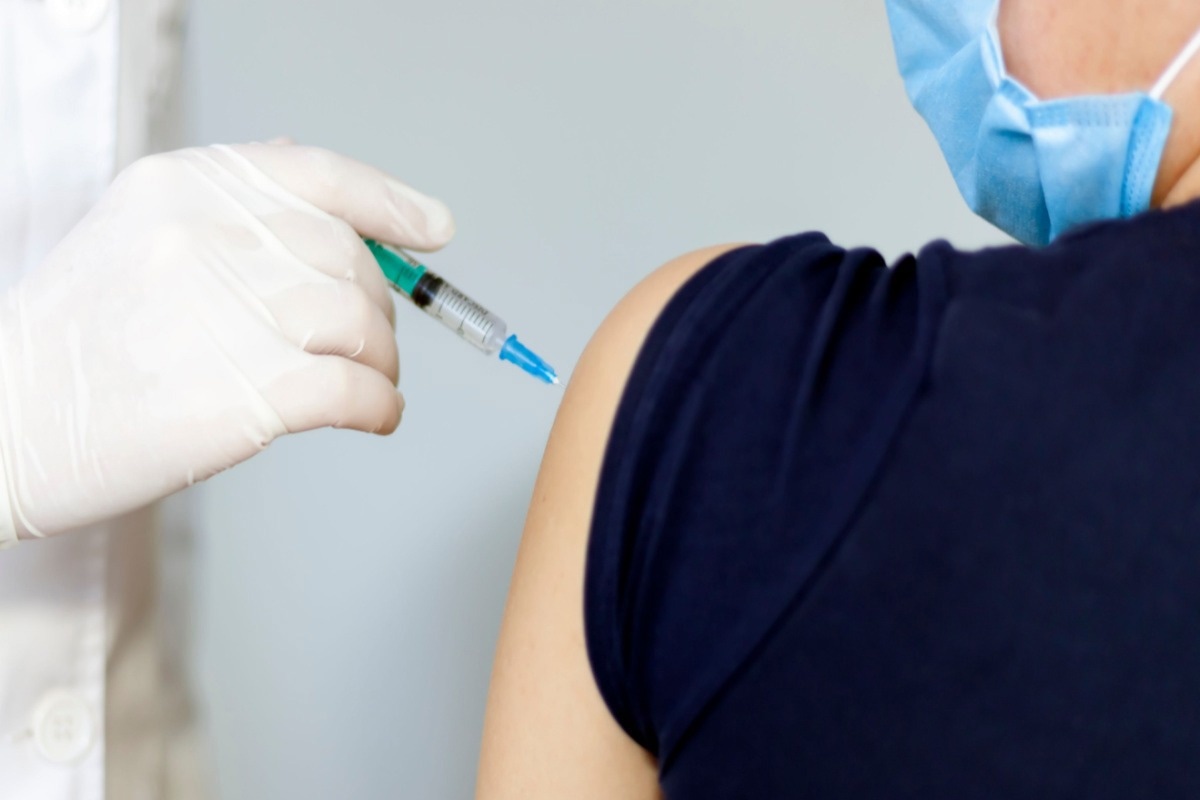The researchers also tested whether antibodies targeting the more conserved S2 subunit could confer protection against all human CoVs, including distinctly diverse alpha- and beta-CoVs.
 Study: SARS-CoV-2 S2–targeted vaccination elicits broadly neutralizing antibodies. Image Credit: Nr-stock/Shutterstock
Study: SARS-CoV-2 S2–targeted vaccination elicits broadly neutralizing antibodies. Image Credit: Nr-stock/Shutterstock
Background
SARS-CoV-2 variants of concern (VOCs) have acquired multiple immunity-evading mutations in their S protein. Therefore, there is an urgent need to consider alternative novel vaccination approaches targeting less mutable and more conserved regions in the S protein, such as the fusion peptide (FP), heptad repeats (HRs), and stem helix of the S2 subunit. Moreover, the next-generation coronavirus disease 2019 (COVID-19) vaccines should elicit broader neutralizing activity.
About the study
In the present study, researchers used a C57BL/6J mouse model to demonstrate prior vaccination by a human coronavirus (HCoV)-OC43 S primed neutralizing antibody (nAb) responses to a single SARS-CoV-2 S vaccination. Typically, such vaccinations would remain sub-immunogenic and could not elicit an S2-directed antibody response. Additionally, they showed that by broadening the nAb response to highly conserved epitopes of S2, such as the FP and HRs, S2-based vaccination induced robust in vitro neutralization of all human and animal CoVs.
First, the researchers administered a single HCoV-OC43 S dose (prime) using a deoxyribonucleic acid (DNA) vaccine. Next, they used an enzyme-linked immunosorbent assay (ELISA) to detect the vaccine-induced nAbs in mice and again administered a DNA vaccine (boost). Further, the researchers vaccinated C57BL/6J mice with a DNA vaccine encoding recombinant monomeric SARS-CoV-2 S2 protein, spanning SARS-CoV-2 Wuhan S amino acid residues 686 to 1211, to explore the link between HCoV-OC43 S priming enhanced S2-targeting and of neutralizing antibodies by subsequent SARS-CoV-2 S vaccination.
Study findings
ELISA results showed that the prime dose did not induce SARS-CoV-2 receptor-binding domain (RBD) or S1 cross-reactive immunoglobulin G (IgG) antibodies, and low titers of SARS-CoV-2 S2 cross-reactive IgG antibodies. However, the booster dose increased titers for SARS-CoV-2 S2 2.5 times. Further, a plaque reduction neutralization test (PRNT) showed OC43 S immunization generated antibodies with weak neutralizing activity against ancestral SARS-CoV-2 Wuhan S and the S of Alpha VOC, and that too in some mice only at the highest serum concentration.
An S2-specific ELISA showed that a DNA vaccine encoding the recombinant S2 protein induced more than four-fold higher titers of S2-targeting antibodies. This finding indicated that full-length S stimulated only a fraction of the response to S2. However, recombinant S2 protein containing DNA vaccine could not recognize intact SARS-CoV-2 S in its natural conformation and did not induce nAbs against it.
Flow cytometry results showed that the antibodies induced by SARS-CoV-2 S2 vaccination also recognized the full-length S from four HCoVs, other SARS-CoV-2 VOCs, and the two bat CoVs. Furthermore, these antibodies effectively neutralized retroviral vectors pseudotyped with SARS-CoV-2 Omicron S, indicating its broad neutralizing ability. However, the addition of soluble recombinant SARS-CoV-2 S2 blocked the neutralization of Omicron S but not RBD, indicating that S2-targeting antibodies mediated their neutralizing activity. These results also suggested that monomeric recombinant S2 protein had epitopes of neutralizing S2-targeting antibodies.
Conclusions
The study results demonstrated that prior exposure of immunologically naïve mice to HCoV-OC43 S promoted S2-targeting cross-reactive antibodies and induced anti-SARS-CoV-2 nAbs. Other currently used vaccines could not have elicited such nAbs after the prime dose, providing a piece of direct evidence for a cross-protective immunity. More importantly, the study data established that S2 vaccination could better prepare the host immune system to adequately respond to the highly mutable S1 subunit in emerging SARS-CoV-2 VOCs.
Serum from mice vaccinated with S2-vaccine appeared to target the hinge region and central helix regions of S2 more strongly than the stem helix or FP region. These regions are considerably more conserved among human and animal CoVs than other regions of S2, although S2 is far more conserved than S1.
Currently used mosaic and multimeric nanoparticles displaying RBDs from diverse CoVs, or messenger ribonucleic acid (mRNA) vaccines encoding chimeric SARS-CoV-2 S proteins elicit potent broadly neutralizing activity against the sarbecoviruses of beta-CoVs only. However, a multivalent vaccine combining full-length S proteins of two or three SARS-CoV-2 VOCs with SARS-CoV-2 S2 could maintain cross-reactive responses to current or future pandemic-causing CoVs, given it ensures a balanced immune response to diverse S1 and conserved S2 epitopes.